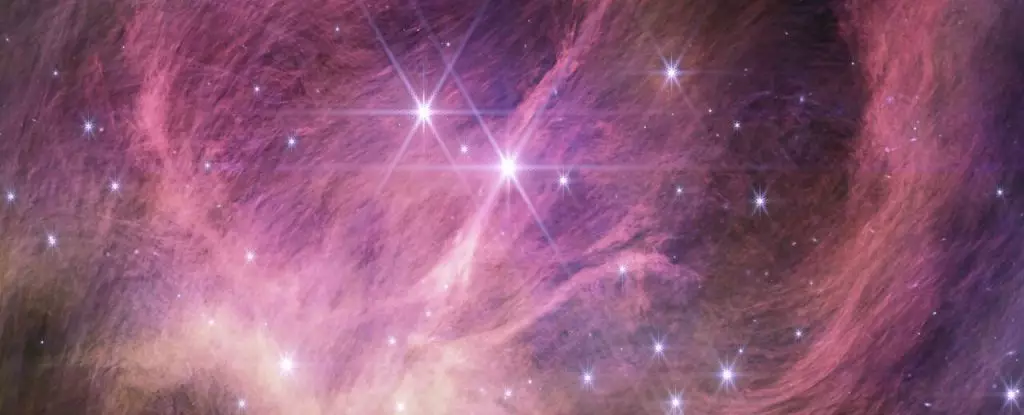Our understanding of star formation is being challenged by the recent discovery of a record-breaking object – a lone brown dwarf – that is defying traditional explanations. This brown dwarf, with a mass just 3 to 4 times that of Jupiter, stands out for being the lowest-mass object of its kind ever discovered. The perplexing question surrounding its formation has astronomers questioning the current models and seeking answers on how stars form at such low masses.
Brown dwarfs, often referred to as “failed stars,” share similarities with both stars and planets. They form from the collapse of dense clumps in gas and dust clouds, just like stars, but lack the mass required to ignite fusion and become true stars. However, they are distinct from planets as they form through gravitational collapse rather than gradual accumulation of material. When the mass of a brown dwarf reaches a critical point, it can fuse atoms of deuterium, a heavier isotope, but never reaches the conditions required for hydrogen fusion. This unique classification places them between white dwarf stars and non-glowing “dark” planets.
A team of astronomers, led by Kevin Luhman of Pennsylvania State University, aimed to identify the smallest objects falling into the sub-brown dwarf category. They turned to the James Webb Space Telescope (JWST) to conduct a survey of IC 348, a young star cluster located in the Perseus star-forming region approximately 1,000 light-years away. The JWST’s sensitivity to infrared radiation was crucial due to the cool and dim nature of these objects.
The team’s efforts paid off as they identified three new members of IC 348 that fit the characteristics of sub-brown dwarfs. Ranging in mass from three to eight Jupiters and exhibiting temperatures between 1100 and 1800 Kelvin, the smallest of these candidates broke the record for the lowest-mass object in its class, weighing in at a mere three to four Jupiters. However, this newfound object’s existence presents a riddle, challenging our current knowledge of star formation.
Traditionally, star formation occurs within massive clouds that possess significant gravity. Creating an object the size of a planet requires a smaller cloud with less gravity, making the formation process more difficult. The researchers considered the possibility that these objects were exoplanets ejected from their original planetary systems. However, this explanation is unlikely since the objects are far larger than typical planets, and the stars in IC 348 are relatively small. Furthermore, the cluster’s young age suggests that planetary formation and subsequent ejections have not had enough time to occur.
In addition to challenging our understanding of star formation, the spectrographic analysis of these sub-brown dwarfs unveiled another fascinating revelation. The presence of an unidentified hydrocarbon in two of the objects left scientists puzzled. While this unknown chemical species has been detected in Saturn’s and Titan’s atmospheres, as well as interstellar space, its existence in an extrasolar atmosphere was unprecedented. This discovery raises further questions about the interactions between stars and planets and fuels the excitement surrounding these enigmatic objects.
The discovery of the lone brown dwarf and its accompanying mysteries underscores the limitations of our current models of star formation. Astronomers are now challenged to develop new theories to explain these phenomena. The existence of an object with such low mass yet resembling a star adds complexity to our understanding of how stars and planets form. By pushing the boundaries of our knowledge, these discoveries encourage scientists to explore uncharted territories and refine our understanding of the universe.
The discovery of the lone brown dwarf challenges our understanding of star formation. This enigmatic object defies traditional explanations and raises questions about the formation process at extremely low masses. With new mysteries surfacing, scientists are tasked with revising current models and exploring uncharted territories in search of answers. The intersection between stars and planets continues to fascinate and perplex astronomers, offering glimpses into the vast complexities of the universe.


Leave a Reply